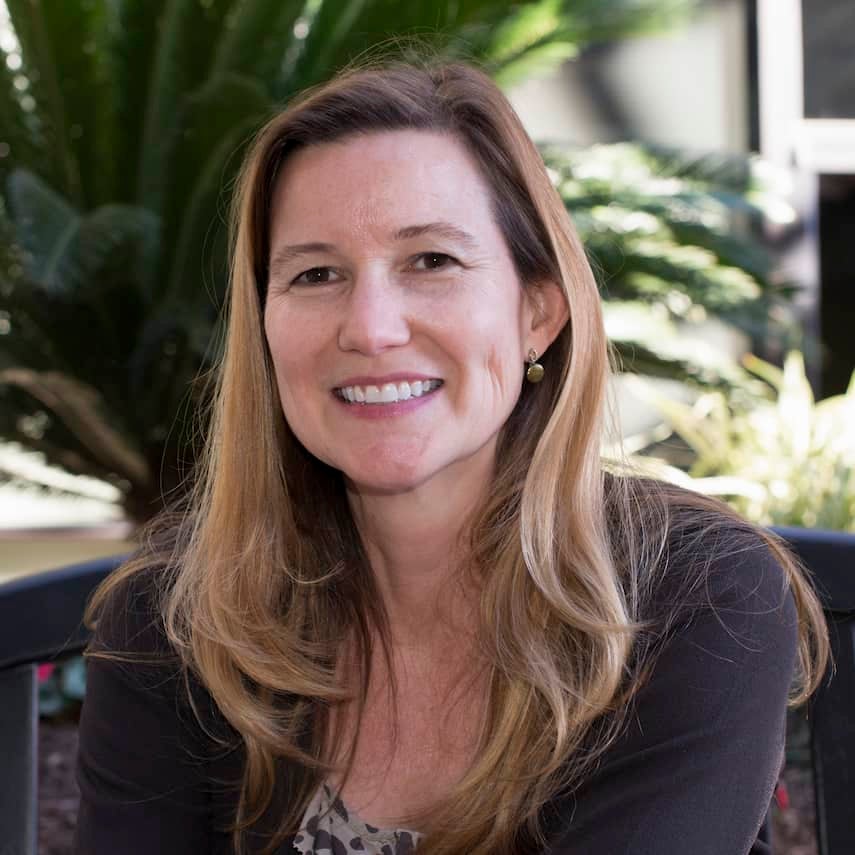How many injured patients come into emergency rooms not knowing they also suffer from post-traumatic stress disorder (PTSD)? Can they be screened to address their needs sooner – before their PTSD symptoms worsen?
Stacy Stevens Manser is addressing these questions in a new study, IMPACT (“Impacting acute trauma: Does a brief preventive intervention affect PTSD outcomes?”), with funding from the Seton Healthcare Family.
Manser is the associate director of the School of Social Work’s Texas Institute for Excellence in Mental Health. For this study, she is collaborating with the University Medical Center Brackenridge, the only Level I Trauma Facility serving the Central Texas area, and the fourth-busiest emergency department in the state.
How did this project come about?
I am partnering with Dr. Ben Coopwood, director of surgical critical care, and with Katherine Houck, a clinical social worker, both at Brackenridge. It’s a really unique and valuable partnership between social work and medicine. Ben and Katherine reached out to me because of my previous work with PTSD and veterans. In 2009, I worked on a jail diversion project that sought to divert veterans with trauma-related issues away from the criminal justice system and into services. For that project, we did PTSD screening on vets, and if they screened positive, we invited them to participate in the jail diversion project.
Your project is one of seven funded by the Seton Healthcare Family. How does your project fit into their overall healthcare vision?
Their goal is to resolve critical health and healthcare services delivery problems in Central Texas. Well, the PTSD screening questions posted on the Veteran’s Affairs (VA) website aren’t even part of the standard protocol in trauma centers like Brackenbridge. This is brand new area for trauma centers, asking what can we do to prevent PTSD. Addressing this question will require changing the way the system operates, including new instruments, new personnel, etc.

What questions are you asking in the study?
The American College of Surgeons has identified that trauma isn’t appropriately addressed, even within trauma centers. We may treat trauma patients, but we don’t look at the prevalence of PTSD. With this study, we’re trying to learn how to appropriately assess a patient coming into the emergency room – perhaps the patient was in a car accident, or was sexually assaulted, or suffered serious wounds… he or she could have faced a variety of traumas. So we are looking at a broad array of individuals, versus the population that I have typically focused on—veterans or people with mental health challenges.
We are asking questions such as, can we assess risk for PTSD for these individuals? What’s the best option to do that? If the patient screens positive, what interventions could be helpful to lead to better outcomes? For instance, can we get a patient at risk for PTSD not to develop PTSD? We start by looking at the prevalence of PTSD in trauma patients and the effect of a brief intervention-– the longer we can do in a hospital setting is 60 minutes. We want to know, what is the effect of this brief preventive intervention? When we follow up, did the patients access the services we recommended? If they did, what barriers did they face accessing care? Are appropriate trauma services available?
What is the duration of this study?
The study will go on for 12 months, starting this August. We’ll be collecting data over a six-month period, starting in September. The way the study is set up, we do the screening for PTSD risk at Brackenbridge. Individuals who screen positive are then assigned to a data collection group, where they receive the brief intervention, or to the control group, where they don’t. Then, we do a follow-ups where we look for evidence of PTSD. It’s also important to note that there are a variety of scales used to evaluate PTSD, so we also have to determine which is best.
You said you’ve never worked with trauma hospital patients. What is it like to jump onto a new project investigating a new population?
It’s exciting! We want to find out how can we improve the healthcare system. This study should lead to bigger things, such as the development of an effective intervention for this population. The value is in the impact on society, where individuals can have a chance at better outcomes.
By Paepin Goff. Posted September 1, 2015.

